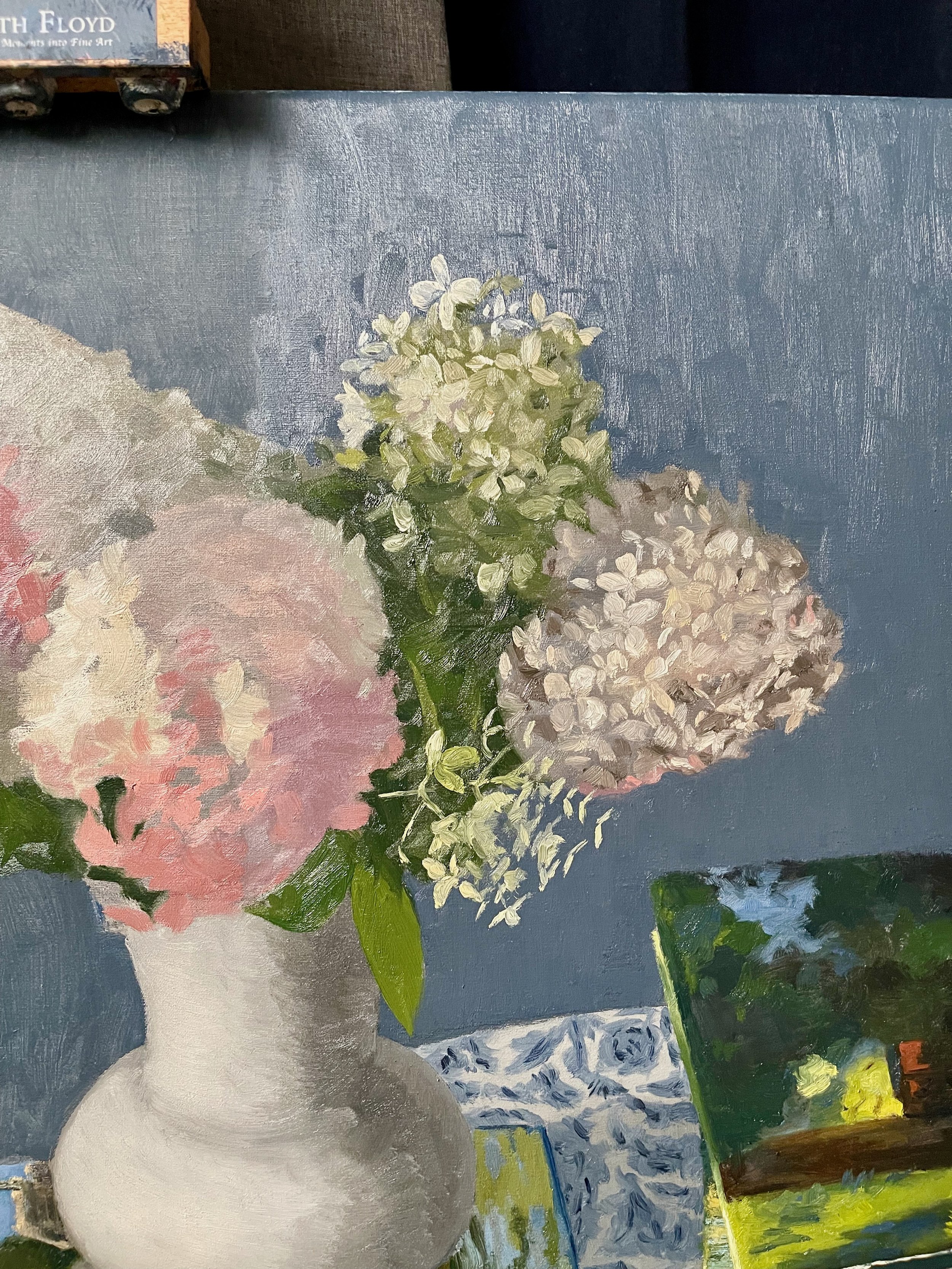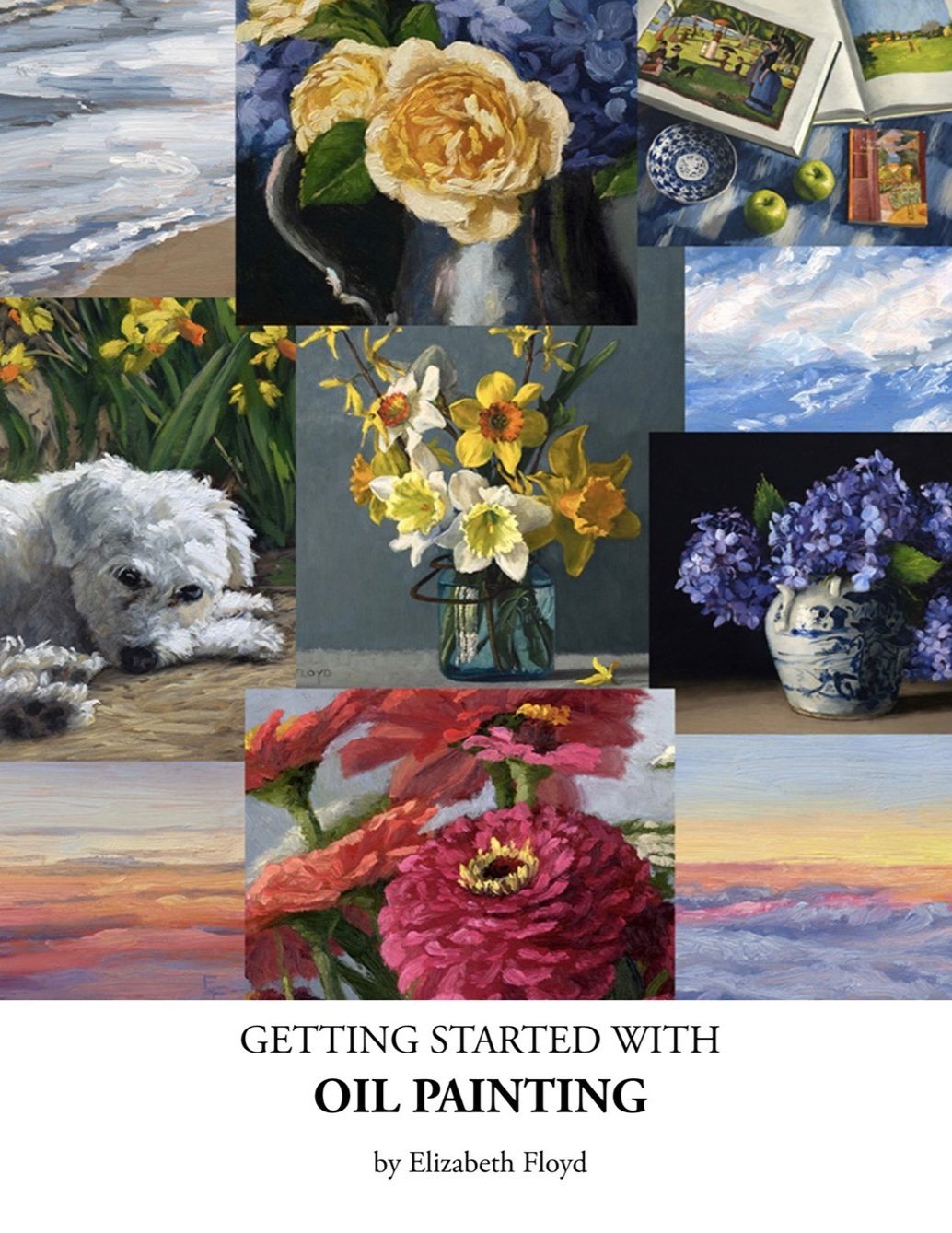Mastering the Wet-on-Wet Oil Painting Technique: A Practical Guide
Work in progress of hydrageas after the third painting session
Wet-on-wet painting, also known as alla prima, is a dynamic and expressive oil painting technique that invites spontaneity, boldness, and fluidity into the creative process. At its core, this method involves applying wet paint directly over still-wet layers, allowing for natural blending and a painterly quality that is difficult to replicate through other means.
What Is Wet-on-Wet?
Wet-on-wet is a technique where fresh layers of paint are applied on top of wet paint rather than waiting for previous layers to dry. This allows the artist to blend directly on the canvas, achieving soft transitions in color and value. It's a powerful tool for creating texture, atmosphere, and immediacy in a painting.
While most commonly associated with alla prima, or direct painting—where a painting is completed in one session—the wet-in-wet technique can also be used within a more extended, indirect painting process. In this approach, even when a painting evolves over multiple sessions, each working layer still utilizes the characteristic softness and blending of wet-on-wet application.
This hybrid approach is how I typically incorporate the technique: as part of a larger process that combines multiple painting methods. Wet-in-wet becomes one of several tools in a painting session that builds toward the final result.
Essential Materials for Wet-on-Wet Painting
To make the most of wet-on-wet painting, it helps to start with the right tools:
Oil Paints: Choose high-quality, slow-drying oil paints. These extend your working time and support smoother blending.
Brushes: A variety of brushes is essential. I tend to favor filbert-shaped hog bristle brushes for their versatility because the are a perfect mix of rounds and flats. Rounds are excellent for creating soft edges and gentle transitions, while flats can produce bold, clean lines and sharp edges that stand out in wet-in-wet passages.
Mediums & Solvents: Odorless mineral spirits and painting mediums like linseed oil or oleo gel can alter the consistency of your paint. Personally, I prefer to maintain a consistent paint texture within each session, reserving major changes in consistency for the final layers.
Canvas or Panel: A pre-primed canvas or panel provides a stable base. The surface texture plays a key role in how your paint behaves. For instance, a smooth panel allows for crisper, more controlled blending, while a rough linen offers more texture and resistance, which can add interest to your strokes.
Techniques and Tips for Wet-on-Wet Success
Layering: Fat Over Lean
One foundational principle in oil painting that still applies here is "fat over lean." This means that thinner (lean) layers should go down first, followed by thicker (fat) layers. It helps prevent cracking and ensures that the painting remains structurally sound over time.
Brushwork and Pressure Control
Controlling your brush pressure is one of the most critical skills when working wet-on-wet. Light pressure allows you to lay paint on top of existing layers without disturbing them too much, while heavier pressure blends and pushes the paint around.
Being intentional with each brushstroke is key. Understanding how different brushes behave and how much pressure to apply will give you greater control over the look and texture of your painting.
Work in progress of hydrangeas between the first and second painting session
Blending with Intention
Some artists caution against over-blending, and while that’s generally good advice, it’s more important to be deliberate. Ask yourself: do I want this area to be smooth and soft, or textured and distinct? The beauty of the wet-on-wet method lies in its flexibility. You can blend expansively or leave edges crisp—the choice depends on the emotional tone and visual effect you're aiming for.
There is no hard rule about how much blending is "too much." What matters is that every blended area serves the overall composition and your expressive intent.
Final Thoughts
Wet-on-wet oil painting is as much about mindset as it is about method. It rewards confidence, spontaneity, and trust in your materials. Whether you're painting alla prima or building up a work over time, using this technique can breathe life and freshness into your process.
By mastering the core skills—material handling, brush control, and purposeful blending—you'll open the door to more expressive, fluid, and compelling paintings. Experiment, observe, and enjoy the process.
If you're just getting started or looking to refine your technique, remember that wet-on-wet painting is not about perfection—it's about connection, with your subject, your tools, and your own creative intuition.
Learn More Inside My Painting Membership
If you’re eager to dive deeper, I teach specific lessons on how to master the wet-on-wet technique inside my painting membership. You'll get step-by-step guidance, live demonstrations, and feedback to help you grow as a painter.
The May and June 2025 lessons specifically focus on wet-on-wet painting techniques and January 2025 is focused on brush stroke techniques.
As a great starting point, I invite you to download my free guide: "Getting Started with Oil Painting". It’s packed with practical tips, essential materials, and beginner-friendly exercises to build your confidence at the easel.
Join the community, grow your skills, and discover the joy of painting with oils—one brushstroke at a time.
Painting Flowers with Liz Membership.


